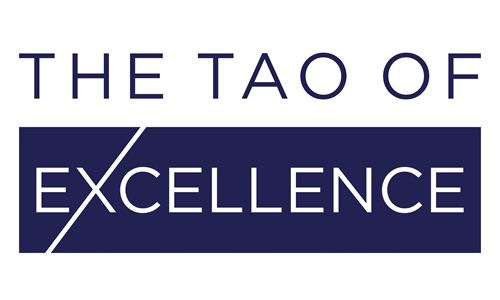Investing in every single team member of your network
Six Sigma is a methodology for the continuous improvement of processes and procedures. It is a technique and way of thinking that works from a baseline of statistical analysis and gives people the tools and knowledge they need to effect changes that will improve specific processes and achieve financially measurable results.
It is built on an ethos of looking at and retraining the way we approach individual processes, and it is most effective when companies train teams that incorporate people from every level of their business. This training develops a mindset that seeks to eliminate the variations and errors in processes—that ultimately incur costs—and ensure that they are instead working at their maximum capability and efficiency. These improvements are then measurable as statistical evidence and financial rewards.
From the start, data is used to evidence and truly understand each phase of the Six Sigma process. Data can objectively establish the right questions, engage teams, find the right answers and conclude with measures that achieve stable process results and sustainable quality improvement.
When applied across the breadth and depth of a business, this process of continuous improvement unites people with a common goal, mindset and activity, and creates an environment where individuals are self-empowered and motivated; the key to any business fulfilling its objectives and full potential.
Six Sigma is a technique that:
- teaches companies to retrain their focus on the customer and see every action taken internally as one that will impact the customer;
- creates a framework that improves understanding of the common goal;
- develops a language for the process of continuous improvement, ensuring that it can be understood and utilised across an organisation;
- enables standardized procedures, so that the optimum form of a process is not deviated from in the future;
- enables sustainable improvements;
- creates an environment that inspires and drives continuous improvements to be made across a company.
The process
A Six Sigma project methodology has five distinct phases; DMAIC (Define, Measure, Analyse, Improve, Control). These are applied with the aim of improving existing business procedures and processes.
Define
Selecting the process under review and defining the known parameters of the project, such as the issue, goal, scope, resources, timeline and voice of the customer.
Measure
An objective assessment of the process through data collection. This will identify the baseline for improvement and address the primary causes of variations and errors, as well as the overall capability of the process.
Analyse
Data analysis and statistical evaluations enable the team to identify, validate and select the root cause that needs to be eliminated from a process for its improvement. Teams test their hypothesis using statistical tools that build a true understanding of the behaviour of that process, whilst also creating the basis for improving, optimising and stabilising the process.
Improve
This phase finds the solution that will solve the ‘root cause’ that has been identified. ‘Improve’ deploys a series of creative and systematic tools that assist teams in creating, developing and choosing the optimum solution. Simple and straightforward solutions are advised to minimise the risks and costs of implementing any changes, as is planning the implementation of the solution in detail.
Control
The aim here is to ensure that the implemented improvement was actually a real improvement; i.e. did the improvement address the root cause of the problem and was the predefined goal of the project achieved. The answers and results of the project are based on data collection following the project (which can also be monitored from there on). The results of that data collection will ensure whether the improvement is long-term and sustainable.
The training
A key feature of Six Sigma is that is makes the functions of quality management a professional goal, creating a sense of progression and personal achievement. As with such significant, in-depth or focused training programme or educational courses, there are different stages of learning and levels of application:
- White belt: provides an introduction to understanding the concepts, methodology and techniques behind Six Sigma.
- Yellow belt: prepares you as a contributor to a Six Sigma project with a more in-depth understanding of the methodology, key concepts and activities, or as a leader on simple improvements to your own work area.
- Green belt: the ability to apply the Six Sigma method to improvement projects in your organisation, including the management of your own Six Sigma project, specialist support coaching and learning how to confidently and correctly use statistical and analytical tools for each phase of the project.
- Black belt: utilising more advanced statistical tools and focusing on the implementation and execution of improvements; sustaining them within the organisation, mobilising staff and advising management.
Specialist Six Sigma Courses at The Tao of Excellence
Six Sigma courses at The Tao of Excellence are specifically designed for medical device manufacturers. Our experience and expertise in this industry has enabled us to create a Six Sigma training programme that is tailored to this specialist field, including the significant and ongoing changes to its regulatory landscape.
We also have extensive experience developing and implementing live improvement projects with our clients. As such, we’ve been able to design a training programme that utilises the lessons learnt during those projects, as well as creating activities that are directly applicable to our clients.
This is particularly true of our Green belt course, which is far more extensive and specialised than any alternatives we’ve seen on the market. This course includes applicable and hands-on projects, and a substantial section devoted to Quality Assurance, testing, compliance and project management skills.
We have additionally enhanced each course with a series of more advanced techniques and activities, so that our clients are trained at the highest possible standard for their certification. As such, a director of R&D manufacturing described our most recent Green Belt course as “perfectly structured” and one of the best he had taken in the past 30 years of his professional career.
We believe that this advanced learning, with directly applicable knowledge, truly builds the confidence in and commitment to using the principles of Six Sigma for sustainable and continuous improvement.
Quick understanding and agility
Our long-term experience and expertise in this field means that we can understand and evaluate your core concerns quickly and propose relevant and realistic measures.
Empowering your team
Our training programme is designed to not only improve your company’s operations but empower every individual member of your team. Developing their knowledge, skill-set and agency ultimately enables them to do more and reach further than the initial improvement initiatives.
Sustainable implementation
Your long-term benefit of our work is an integral motivation in our work.
For more information on the Six Sigma method and our courses contact The Tao of Excellence, or visit our website to secure your place on our next set of available dates. Our Reflections next week will take a more in-depth look at the details of our latest Green belt course. To learn more or find out first about our course announcements, follow us on social media using our links below.
 Jasminka Roth
Jasminka Roth
Founder and Director of The Tao of Excellence
Phone
+41 52 685 51 65
Email
[email protected]
Did you like this article? Follow us on LinkedIn and Twitter!

